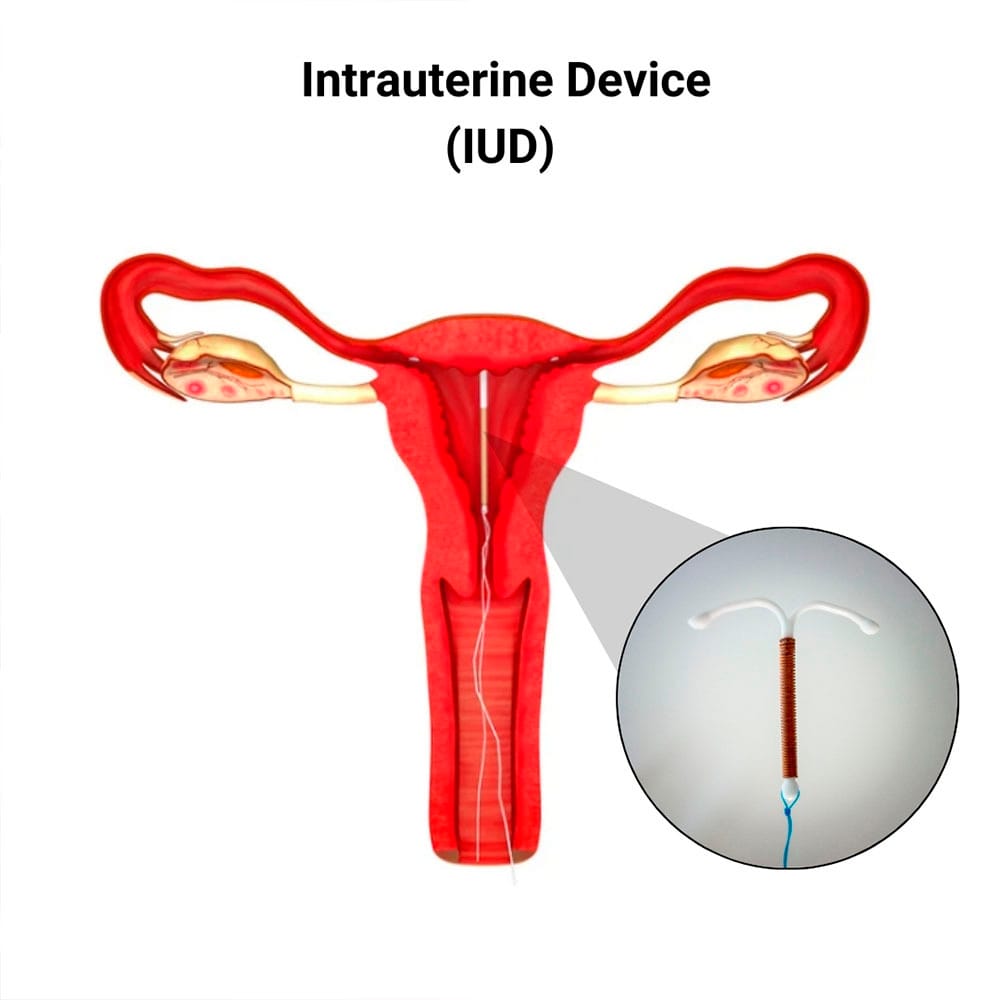What Are IUDs?
 Intrauterine devices, more commonly known as IUDs, are small, T-shaped devices that are inserted into the uterus to prevent pregnancy. They’re considered the most effective birth control method for long-term use as well as for emergency contraception. They’re also reversible, so when you’re ready to get pregnant, it can be removed easily.
Intrauterine devices, more commonly known as IUDs, are small, T-shaped devices that are inserted into the uterus to prevent pregnancy. They’re considered the most effective birth control method for long-term use as well as for emergency contraception. They’re also reversible, so when you’re ready to get pregnant, it can be removed easily.
The main types of IUDs include:
- Hormonal IUD
- Non-hormonal IUD
- Copper IUD
IUD effectiveness is about 99 percent and, depending on the brand you choose, lasts from three to 12 years. After the removal of an IUD, fertility returns quickly. ParaGard® and Mirena® are two examples of the non-hormonal and hormonal IUDs used by doctors. If you’re looking for methods to prevent pregnancy, don’t decide without a doctor, as IUD side effects and IUD complications may occur.
Dr. Felix Cohen, director of Cohen Medical Practice (CMP), is a best gynecologist in Midtown, New York with years of experience in reproductive health. His practice in NYC offers detailed consultations about birth control and family planning.
What Are Hormonal and Non-Hormonal IUDs?
Hormonal IUDs, of which Mirena is an option, release a small amount of the hormone progestin, which is similar to the body’s natural hormone progesterone. This thickens the cervical mucus and blocks the sperm from reaching the egg. It leads to the thinning of the uterine lining, making it difficult for a fertilized egg to implant.
Non-hormonal IUDs don’t work with hormones. They’re made up of copper, which works as a natural spermicide. The copper causes an inflammatory reaction in the uterus that creates a toxic environment for the sperm, which stops them from fertilizing an egg. ParaGard is used for non-hormonal IUD insertion.
Other features of ParaGard vs. Mirena include:
- With Mirena, you experience lighter periods.
- Mirena often reduces menstrual cramps.
- Mirena manages the symptoms of endometriosis.
- Considering an IUD vs. pill, no maintenance is needed after insertion from either type.
- ParaGard doesn’t cause hormonal changes.
- No IUD weight gain is reported with ParaGard.
- The copper IUD is also used as emergency contraception.
When Can I Use IUDs?
If you’re looking for long-term contraception, an IUD may be ideal. You may also get an IUD after childbirth. If inserted within five days of unprotected sex, an IUD can work as an emergency contraception. If you’re hormone-sensitive, ParaGard copper IUD is a safe option for you. The IUD failure rate is less than one percent.
In cases where IUD insertion is not done properly, or the device is misplaced, then it leads to pregnancy. If you have a history of pelvic inflammatory disease or at high risk for developing a sexually transmitted disease, then IUD insertion may worsen your condition.
Other situations in which you should avoid IUD insertion include:
- Uterine abnormality
- Allergy to copper
- Heavy periods
How Are IUDs Inserted?
Inserting IUDs requires experience. It may be done quickly at your CMP doctor’s office. Before insertion, your surgeon books an initial consultation to discuss which method is right for you, explaining potential risks and complications.
IUD insertion procedure then includes:
- Taking painkillers to control cramping during and after insertion
- Inserting an instrument into the uterus to measure its depth and position
- Inserting the IUD device folded into a small, thin tube, which is then inserted through the cervix into the uterus
- Opening the arms of the IUD to form a T-shape
- Trimming the strings attached to the IUD, leaving one to two inches hanging from the cervix
After insertion, your doctor performs an ultrasound to check that the IUD is in place. You may experience cramping and IUD bleeding for a few days. After four to six weeks, your doctor may schedule a follow-up to check the position of the IUD.
How Long Should I Wait to Have Sex After IUD Insertion?
With a hormonal IUD, it takes about seven days to work, so use condoms for sex after IUD insertion for that first week. With a non-hormonal IUD, you don’t need any other birth control, and you can have sex right after insertion.
Some women may experience period-like cramps and spotting for a few days, which makes sex uncomfortable. Additionally, your doctor may recommend you wait for the symptoms to recede and explains that:
- Your partner may feel the strings during sex.
- If your strings are still noticeable, you may ask your doctor to trim them again.
- There is no change in sexual sensation and comfort.
Are There Any IUD Complications?
IUD insertions are usually safe, but they carry potential complications and risks. In very rare cases, an IUD can perforate the wall of the uterus. In about two percent of cases, the IUD moves out of place, which increases the chance of pregnancy.
Other potential risks include:
- Hormonal side effects
- IUD infection
- Heavier periods
To choose between copper IUD vs. Mirena, you must consult with someone who can inform you clearly about the IUD pros and cons. If you’re stuck between Paragard vs. Mirena, contact Dr. Cohen at Cohen Medical Practice (CMP) right away so he can guide you on what you need and what you don’t.

